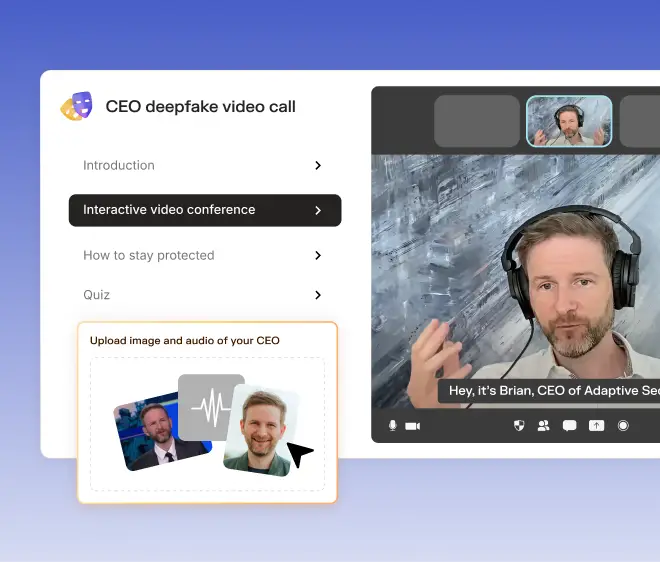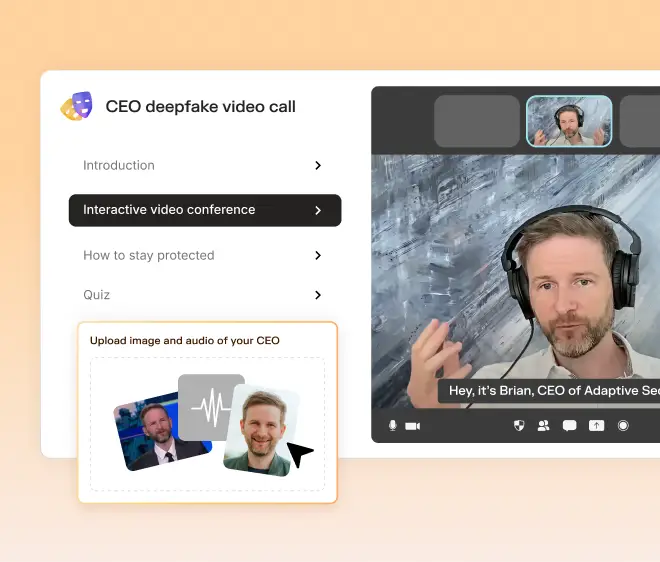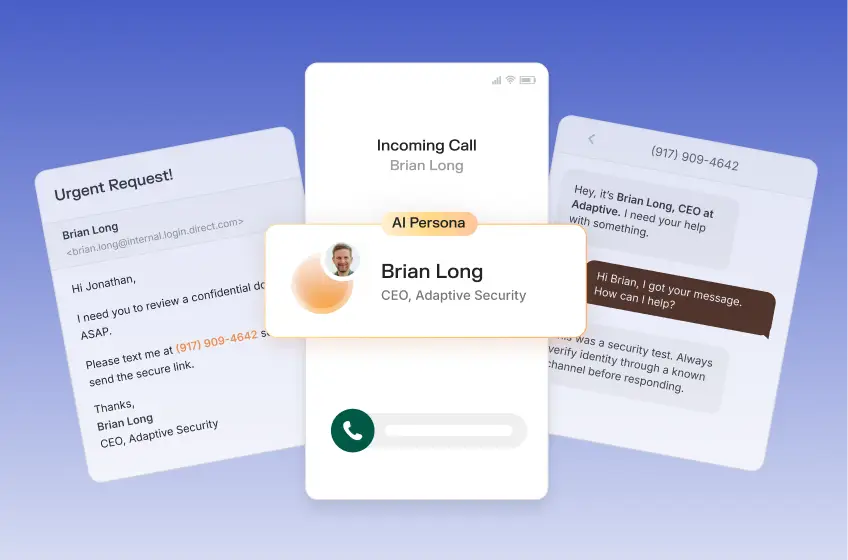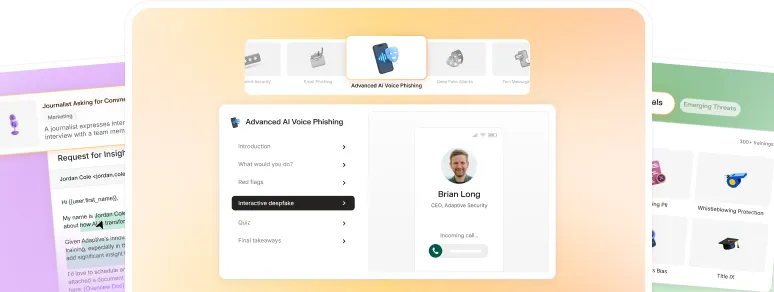AI risk assessment feels slow and shallow while large language models (LLMs) ship weekly. If you’re a CISO trying to keep pace with rapidly evolving LLM deployments, traditional checklists and static audits can’t address the complexity — or the urgency — of today’s AI threats.
IT and security teams are often left scrambling to retrofit controls for systems already in motion, exposing the organization to everything from shadow AI use to prompt injection vulnerabilities.
So, what are the best AI safety tools for enterprises that want to move fast without sacrificing governance?
The answer lies in building a layered, real-time approach to AI risk management, one that integrates behavior monitoring, red team simulations, and compliance-aligned workflows.
When done right, AI safety becomes a living process: measurable, adaptable, and enterprise-ready.
Why Most AI Risk Assessments Fail Today
Enterprise adoption of LLMs is exploding.
According to Gartner, more than 80% of enterprises will have used or deployed generative AI models and interfaces by 2026. That’s a massive increase from just 5% in 2023.
Meanwhile, a Metomic survey found that 72% of U.S.-based CISOs expressed concerns that generative AI could result in security breaches.
Even so, most security teams are still relying on annual audits and playbooks designed for traditional IT systems. These outdated approaches can’t keep up with real-time AI threats, adversarial attacks, or the fluid nature of machine learning (ML).
IT and security leaders are often left playing catch-up while new models, features, and use cases emerge near-daily.
By the time a risk assessment is finalized, the technology landscape, as well as the threat model, has already undergone dramatic changes. That in turn leads to fragmented oversight, poor visibility, and an inability to respond to risks at the speed required.
Common Blind Spots CISOs Report
Modern attack surfaces demand new kinds of visibility. Yet CISOs frequently cite a handful of blind spots in AI environments.
- Shadow LLM Usage: Departments spin up GPT integrations or call APIs without going through security reviews.
- Multichannel Deepfakes: Email filters often miss deepfake attacks across voice, video, and SMS channels.
- Static Checklists: Traditional compliance workflows ignore model drift and prompt-based manipulation.
- Lack of Visibility: IT and security teams are unaware of which teams are utilizing specific AI tools and for what purposes.
A 2025 survey found that 55% of IT and security leaders lack confidence in their security tools’ ability to detect breaches, with the core issue being limited visibility.
The Cost of Incomplete Frameworks
Failing to address the blind spots in AI safety isn’t only a technical oversight. It’s a business risk, too.
Without a comprehensive AI safety strategy, enterprises face:
- Regulatory fines from non-compliance with Mandates like the European Union’s GDPR or the AI Act.
- Intellectual property leaks through unfiltered LLM responses.
- Brand damage from publicized AI missteps or adversarial misuse.
- Operational downtime due to reactive triage and containment.
- Loss of customer trust and investor confidence.
IBM estimates that the average cost of a data breach is approaching $5 million, so a modern framework must be layered and aligned with mandates as AI phishing surges.
A Layered Framework for Enterprise AI Safety
To keep pace, IT and security teams need a model that evolves as quickly as the platforms and tools they protect.
The complexity of enterprise AI use calls for continuous evaluation and action, not annual reviews.
Imagine a simple diagram with four rows for Govern, Map, Measure, and Manage. The categories reflect a full-spectrum, lifecycle-based approach to AI risk. Each layer supports not only technical safeguards but also organizational alignment and compliance readiness.
The layers work together to form a continuous feedback loop that assesses, monitors, and adapts AI risks while promoting accountability across the organization.
AI safety framework overview
Govern, Map, Measure, and Manage Explained
Each layer of an AI safety framework represents a critical domain of AI safety overall.
Here’s how they work in practice.
Govern
Define rules and ownership.
- Set ethical AI guidelines and acceptable use policies.
- Appoint cross-functional AI safety officers or task forces.
- Document accountability across AI lifecycle stages.
- Establish board-level reporting on AI risk posture.
Map
Know what’s running and where.
- Inventory deployed models, APIs, and shadow AI projects.
- Trace data flows, model lineage, and input/output behaviors.
- Identify third-party dependencies and external risk exposure.
- Log LLM versions and update cadence to spot drift.
- Track model usage volume and frequency across departments.
Measure
Test and quantify risk.
- Run automated red teaming simulations and jailbreak tests.
- Continuously score model behavior and bias metrics.
- Measure accuracy drift and flag anomalous patterns.
Manage
Respond and evolve.
- Route flagged outputs to the security operations center (SOC) or triage team in real time.
- Conduct root cause analysis and blameless postmortems.
- Update employee training and model prompts based on incident data.
- Coordinate response playbooks across teams.
- Automate policy updates based on incident learnings.
This framework maps directly to Adaptive Security’s core pillars: train, simulate, and triage.
Best AI Safety Platforms & Tools for Enterprises
The best AI safety platforms and tools for enterprises enable every layer of the framework without slowing teams down. They help automate governance, accelerate risk detection, and streamline incident response.
Adaptive Security’s real-time training and simulations
Adaptive’s next-generation platform guides organizations to proactively assess and improve their risk against AI threats.
The platform allows IT and security teams to deliver dynamic security awareness training, simulate deepfakes with stunning realism, and gain insights that inform decision-making.
Used by a rapidly growing number of industry-leading brands, Adaptive Security boasts a 5-star rating on G2.
Governance and policy solutions
Credo AI and IBM’s watsonx.governance are just two of several tools that focus on enforceable guardrails and compliance.
Here’s what governance and policy solutions typically offer:
- Policy templates aligned with major frameworks
- Bias detection and fairness scoring
- Documentation for audit trails and regulatory submission
- Role-based access control and review workflows
Adaptive Security clients, by the way, can easily integrate both Credo AI and IBM’s toolkit via API or webhook, offering unified reporting across risk and training.
AI compliance mapping examples
LLM guardrails and content filters
Content safety starts at the prompt level. Solutions like Lakera Guard and open-source libraries, such as Rebuff and Detoxify, help prevent misuse.
- Block prompt injections and jailbreaks.
- Sanitize inputs and detect personally identifiable information (PII) or toxic content
- Alert on abnormal sentiment or tone shifts
- Analyze prompt patterns for manipulation attempts
Dropbox is one of many large-scale organizations deploying Lakera Guard, for example, to filter harmful prompts before they reach production large language models.
Building an AI Risk Mitigation Workflow
A successful AI safety strategy requires more than the best AI risk mitigation solutions. It’s a playbook that aligns people, processes, and platforms into the same defensible lifecycle.
Pre-deployment model evaluation checklist
Before any LLM goes live, take the following steps:
- Conduct threat modeling across input vectors.
- Validate training data lineage and labeling quality.
- Run red team simulations on prompt-response pairs.
- Benchmark outputs for fairness, toxicity, and bias.
- Review access controls and permissions linked to model usage.
Runtime monitoring and automated triage
Once deployed, continuous monitoring is required. Make sure to:
- Capture telemetry from model responses in real time.
- Detect anomalies, like unexpected tone or token entropy.
- Route alerts directly to SOC dashboards.
- Use ML-based classifiers to prioritize alert severity.
Post-incident learning loops
Every incident presents a learning opportunity, and the following actions help ensure the system improves over time.
- Host blameless postmortems and classify root causes.
- Apply insights to update prompts, filters, or governance.
- Track reduction in repeat incidents quarter-over-quarter.
AI Behavior Monitoring for Continuous Risk Detection
Need to track how models perform in the wild? AI behavior monitoring detects drift and manipulation before it becomes a breach.
Establishing baselines and anomaly detection
A model’s baseline is its expected range of responses under normal conditions. Without a known baseline, detecting anomalies becomes a matter of guesswork.
When establishing a baseline, there are a few signals to monitor:
- Token entropy spikes
- Sudden injection or escalation rate changes
- Output length of anomalies or hallucinated facts
You can see adaptive thresholds with statistical scoring. Take the following formula, for example:
- Anomaly Score = (Observed Value - Baseline Mean) / Standard Deviation
This step helps flag edge-case outputs in real time.
Integrating SOC analytics with model telemetry
When telemetry flows into your SIEM, response gets faster.
- Model logs → SIEM correlation engine → Adaptive dashboard.
- Benchmark: Mean time to detect (MTTD) improves 25–40% post-integration.
- Maintain audit trails for model behavior under regulated environments.
Given the over 24% CAGR growth in hybrid and edge AI infrastructure, local log retention and offline analysis remain critical tasks for regulated industries.
Strengthening AI Risk Assessment with Frameworks & Tools
AI safety is a living discipline that demands the same rigor as traditional cybersecurity, but with more nuance and speed.
By adopting a layered framework, investing in modern tools, and implementing a resilient workflow, your organization can continuously assess risk, respond to threats, and maintain compliance.
Ready to solve AI risk assessment once and for all? Partner with Adaptive Security to tackle AI threats with a strategy that starts with the strongest layer of defense: employees.




As experts in cybersecurity insights and AI threat analysis, the Adaptive Security Team is sharing its expertise with organizations.
Contents







.avif)
.avif)
.avif)